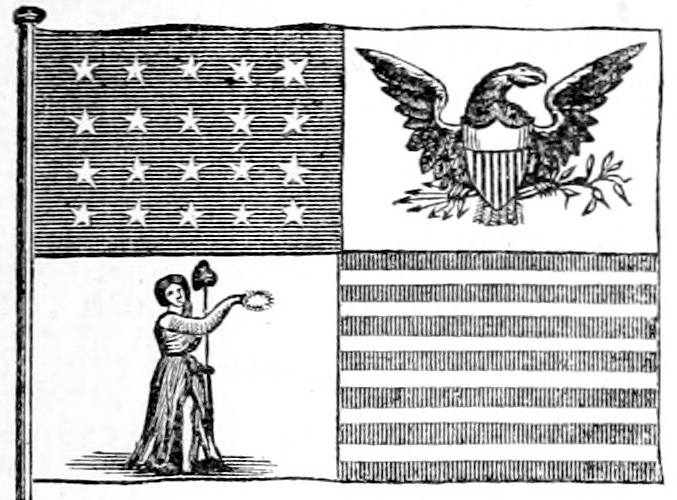Image: Proposed US Presidential Flag 1817
Description: ↑ A proposed presidential flag from 1817, which was never adopted. It was proposed by Samuel Chester Reid during the Congressional committee discussions that would lead to the Flag Act of 1818 (which is still the definition for the U.S. flag), but apparently never got any further. The flag was described as a "national standard", and was to be "composed of the emblematic representations of our escutcheon quartered upon it: viz., the stars, white, on a white field under the stars; the eagle in the upper right-hand quarter or fly of the standard on a white field; and the thirteen alternate stripes of red and white under the eagle." The standard was to "be hoisted over the halls of Congress, at our Navy yards and arsenals, and at other public places visited by the President of the United States, during his presence." The reference is in an February 13, 1817 letter from Peter H. Wendover, the Congressman who was chairing the committee, to Samuel Chester Reid, who was the person who proposed the eventually accepted design of keeping 13 stripes while adding to the number of stars when states were added. The drawing is from a 1872 book on the U.S. flag; it differs from a sketch that Reid made in 1850, which switched the eagle and Liberty quarters, and showed the stars arranged in a larger star (which was the initial design used in 1818, though naval custom shortly thereafter used horizontal rows of stars only). Reid also originally intended it to be used for inaugurations and other celebrations, and not only for the president, calling it a "national standard".
Title: Proposed US Presidential Flag 1817
Credit: archive.org scan of Our Flag: Origin and Progress of the Flag of the United States of America, 1872, by George Preble, page 255.
Author: George Preble; original design by Samuel Chester Reid
Permission: This image might not be in the public domain outside of the United States; this especially applies in the countries and areas that do not apply the rule of the shorter term for US works, such as Canada, Mainland China (not Hong Kong or Macao), Germany, Mexico, and Switzerland. The creator and year of publication are essential information and must be provided. See Wikipedia:Public domain and Wikipedia:Copyrights for more details.
Usage Terms: Public domain
License: Public domain
Attribution Required?: No
Image usage
The following page links to this image:


